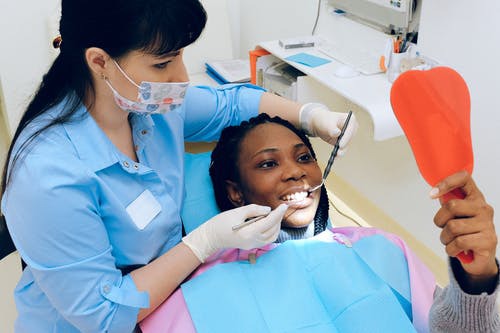What Are the Signs Your Child Needs Braces?

As parents, we all want to ensure our children have a healthy and beautiful smile. Sometimes, achieving that picture-perfect grin may involve braces—a rite of passage for many youngsters. Braces can correct a plethora of dental issues, from cosmetic concerns to serious alignment problems that might affect oral health. But how can you tell if your child needs them? Let’s dive into the key indicators that suggest it might be time for a visit to the orthodontist.
Understanding the Importance of Proper Teeth Alignment
Before we look at the signs for braces, it’s crucial to understand why correct teeth alignment matters beyond aesthetics. Properly aligned teeth contribute to better oral hygiene, as they’re easier to clean, reducing the risk of cavities and gum disease. They also ensure proper chewing and speech and alleviate unnecessary stress on the jaw joints and muscles, which can prevent future dental issues.
Early Warning Signs to Watch For
Several early warning signs can point to your child needing braces. These include early, late, or irregular loss of baby teeth, which could impact the alignment of their permanent teeth. Also, be on the lookout for difficulty in chewing or biting, breathing through the mouth rather than the nose and thumb sucking beyond the age of five, all of which can affect jaw development and teeth positioning.
Behavioral and Visual Indications for the Need of Braces
-
Frequent biting of the cheek or the roof of the mouth
-
Jaws that make sounds, shift, protrude, or retract
-
Facial imbalance or asymmetry
-
Teeth that meet abnormally or not at all
-
Grinding or clenching of the teeth
-
Difficulty in articulating certain sounds due to teeth positioning
Common Dental Issues Braces Can Address
-
Crowding: If there isn’t enough space for teeth to fit naturally, they start to overlap. Crowding can worsen over time, making oral hygiene difficult.
-
Overbite: This happens when the upper front teeth extend out over the lower front teeth, sometimes causing the lower teeth to bite into the roof of the mouth.
-
Underbite: An underbite is evident if the lower front teeth are farther forward than the upper front teeth, affecting the facial structure and jaw function.
-
Crossbite: A crossbite occurs when one or more of the upper teeth bite on the inside of the lower teeth, which can lead to uneven wear and gum disease.
-
Open bite: An open bite is present if there’s a noticeable gap between the upper and lower teeth when the back teeth are clenched.
-
Spacing: Gaps between teeth might be natural or the result of missing teeth and can cause functional issues as well as aesthetic concerns.
If you’ve noticed any of these signs, the next logical step is to consult a dentist specializing in pediatric dentistry. Having a professional evaluation is essential because not all dental alignment issues are visible at first glance. Your local kids’ dentist will assess your child’s teeth, jaws, and facial structure and determine the best course of action and the right time for braces if they are necessary.
When to Schedule an Orthodontic Evaluation
The American Association of Orthodontists suggests that children should have their first orthodontic evaluation no later than age seven. At this age, an orthodontist can predict if braces might be needed and plan accordingly, sometimes utilizing early intervention strategies to minimize the need for extensive orthodontic treatment later on.
Phases of Orthodontic Treatment
-
Phase One: This phase starts around age 7, focusing on jaw growth, correcting bites, and making room for permanent teeth.
-
Phase Two: Typically done around age 11 or older, this phase involves aligning the teeth with braces or other orthodontic appliances.
The Emotional Impact of Braces
On a final note, the emotional and psychological impact of braces should be considered. A straight smile boosts confidence, particularly during the emotionally turbulent teen years. It’s also an investment in your child’s future; a healthy, appealing smile can impact their social interactions and professional opportunities for years to come.
The Role of Cosmetic Dentistry
Sometimes, even after braces, some children might require additional dental procedures to perfect their smiles. In these instances, cosmetic dentistry can work its magic. Veneers, bonding, or whitening are examples of cosmetic treatments that can further enhance your child’s smile. When in search of enhancement beyond braces, consulting with a cosmetic dentistry expert in McPherson can provide families with various options to achieve that radiant, confident smile.
Considerations for Oral Surgery
In certain cases, braces alone may not correct all orthodontic issues, especially those relating to the jaw. This is where an oral surgeon in dental health enters the picture. Oral surgery could be necessary to correct substantial misalignments or structural concerns that affect not only the cosmetics of your child’s smile but also their overall oral function and health. Rest assured that oral surgeons work in conjunction with orthodontists to ensure comprehensive care.
Wrapping Up
Braces might be a fundamental step in safeguarding your child’s dental health and self-esteem. Being vigilant of the signs can lead to timely intervention, ensuring the best possible outcomes. With the support of professionals in pediatric dentistry, cosmetic dentistry, and oral surgery, your child’s dental journey can lead to a lifetime of happy, healthy smiles.
Remember, the first step is to observe and consult. So, keep an eye on your child’s dental development and seek expert advice when needed. That way, you can guide them down the path to optimal dental health and a sparkling smile they’ll cherish forever.

